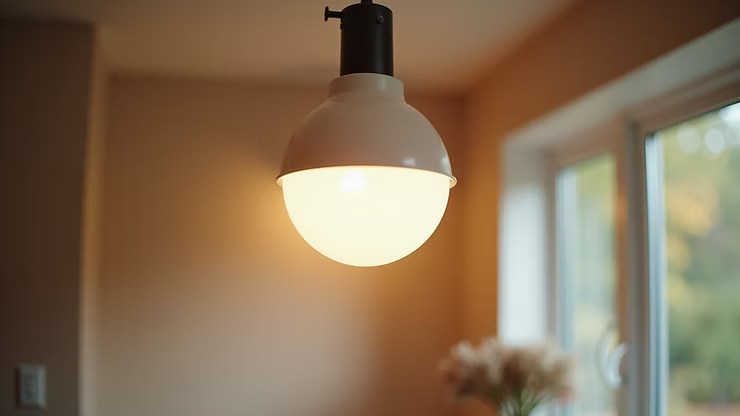Home renovations can spark excitement and sometimes stress. While aesthetic improvements often steal the show, it’s crucial not to overlook functional upgrades, especially electrical enhancements. These upgrades play a key role in ensuring the safety and longevity of your home, making your living space more comfortable and inviting for years to come.
When you consider electrical upgrades during your home renovation, you can improve efficiency, safety, and overall quality of life. With thoughtful planning, these changes can help create a modern and practical environment that meets your needs now and in the future.
Assess Your Current Electrical System
Before you start renovations, it’s vital to assess your existing electrical system. This assessment helps you understand what upgrades may be necessary to support your renovation plans.
Hiring a licensed electrician for an inspection can reveal issues such as outdated wiring or circuits. For instance, homes built more than 20 years ago may have outdated wiring types, which could lead to safety hazards. Signs like flickering lights, burnt outlets, or frequent circuit breaker trips indicate that your system deserves a closer look.
Gaining insight into your current electrical state sets the stage for planned upgrades and prioritizes tasks based on necessity.

Upgrade to a Modern Electrical Panel
If your home relies on an older electrical panel, now is the ideal opportunity to upgrade. Modern panels—often referred to as service panels—can handle more circuits and offer enhanced safety features compared to older models.
For example, a new electrical panel can support up to 200 amps of service, compared to older panels that may only support 60-100 amps. This increase in capacity accommodates contemporary appliances and smart home technologies that demand more power. Additionally, modern panels help reduce the risk of power outages, especially in areas facing storms, where stable electricity is essential.
Consider Smart Home Integration
Smart home technology is not just a trend—it’s becoming a staple for many homeowners. By integrating smart technologies during your renovation, you add convenience and energy efficiency.
Consider devices such as smart thermostats that can lead to energy savings of up to 15% on heating and cooling bills. Installing smart light switches allows you to control your home’s lighting remotely, seamlessly adapting to different activities and moods.
Before implementing these technologies, discuss compatibility with your electrician. They can advise on how your current electrical setup can work with the new devices you want.
Install Additional Outlets
Many homes fall short in outlet availability for our modern, tech-savvy lifestyles. During renovations, planning for additional outlets boosts convenience and functionality significantly.
Think about where you use electronic devices most. Installing outlets in practical locations, such as near sofas or beds, rather than behind furniture makes charging easier and less of a hassle. This simple change can reduce clutter and eliminate the risk posed by running extension cords across rooms.
Enhance Lighting Solutions
Lighting can dramatically change the feel of your home, yet it is often neglected during renovations. Prioritizing lighting upgrades can transform your spaces. Consider a mix of task, ambient, and accent lighting to create a balanced atmosphere.
Using energy-efficient LED bulbs can not only lower your utility bills by as much as 75% but also enhance the brightness in your rooms. Smart lighting systems allow you to remotely adjust brightness and color, giving you control over every space in your home.
Furthermore, integrating recessed lighting can offer a sleek look while effectively illuminating both functional areas and decorative highlights.
Prioritize Safety Features
Safety should be at the forefront of your renovation planning, especially regarding electrical systems. Consider upgrading safety features such as smoke detectors and ground fault circuit interrupter (GFCI) outlets, especially in moisture-prone areas like kitchens and bathrooms.
Additionally, integrating arc-fault circuit interrupters (AFCIs) can protect against electrical fires, which are a serious risk in homes. By focusing on these critical safety features, you minimize hazards and gain peace of mind for you and your family.
Plan for Future Needs
While addressing your current electrical needs is important, planning for future needs is equally crucial. Anticipating changes can prevent costly adjustments down the line.
For example, if you envision adding a home office or outdoor space in the future, plan your electrical upgrades to accommodate those areas now. By installing the necessary wiring or circuit provisions during your renovation, you’ll avoid disrupting your home later on and ensure a seamless integration of new spaces.
Embrace Your Renovation Journey
Incorporating electrical upgrades during your home renovation not only improves functionality and safety but also enhances the overall comfort and efficiency of your space. By carefully assessing your electrical system, upgrading panels, integrating smart technologies, and enhancing lighting, you can create a modern living environment tailored to your needs.
Remember to include additional outlets, safety features, and to plan for future needs, all while engaging a qualified electrician to guide you through this process. Take this renovation as an opportunity to elevate your home into a safe and welcoming haven, and enjoy the advantages brought by thoughtful electrical enhancements.
Energy-efficient lighting fixture enhancing the aesthetic of a modern home. Contact RPK Construction for more information.


Recent Comments